28+ Sample Collaboration Proposal
-

University Collaboration Proposal Template
download now -
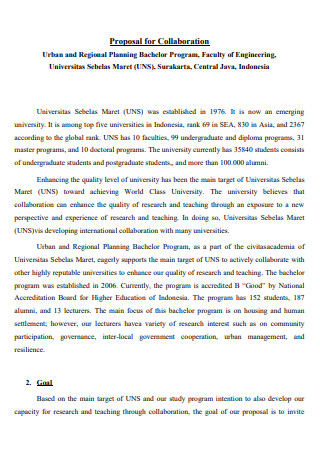
Influencer Collaboration Proposal Template
download now -
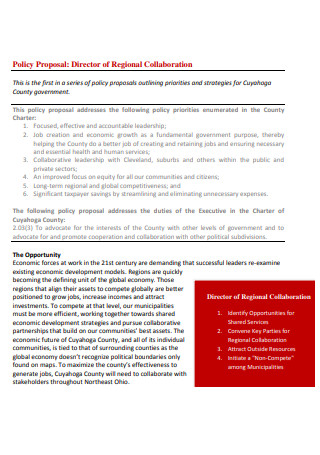
Project Regional Collaboration Policy Proposal
download now -

Education Council Partnership Collaboration Grant Proposal
download now -
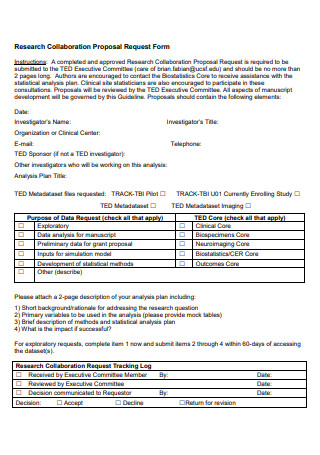
Research Marketing Collaboration Proposal Request Form
download now -

Community Internship Brand Collaboration Business Proposal
download now -
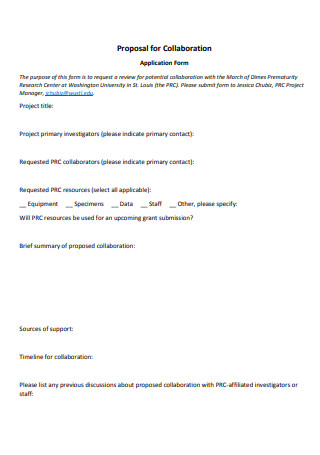
Product Collaboration Proposal Application Form
download now -
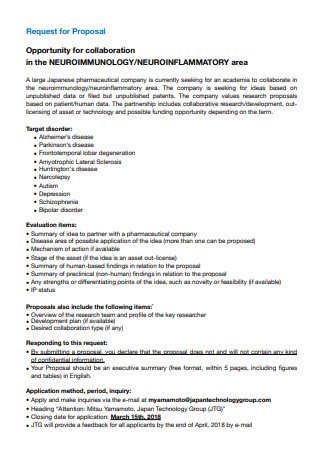
Collaboration Strategic Request For Proposal
download now -

Collaboration on Teaching Opportunities Proposal
download now -
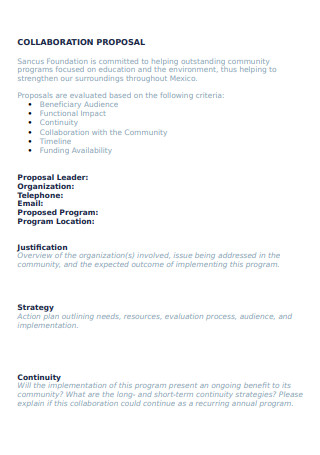
Restaurant Collaboration Proposal Example
download now -

Collaboration in Health Biotechnology Proposal
download now -
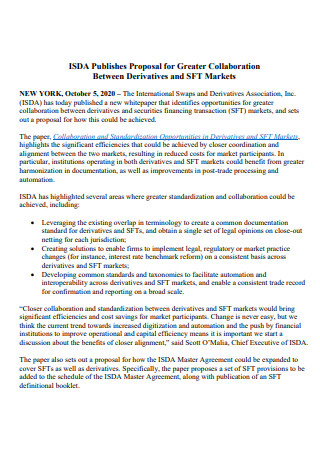
Sample Clothing Brand Collaboration Proposal
download now -
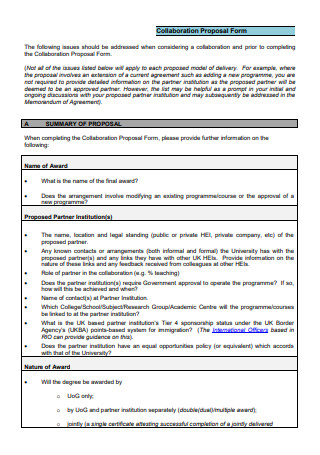
Music Collaboration Proposal Form
download now -

NGO Collaboration Proposal
download now -

College Cooperation Collaboration Proposal
download now -
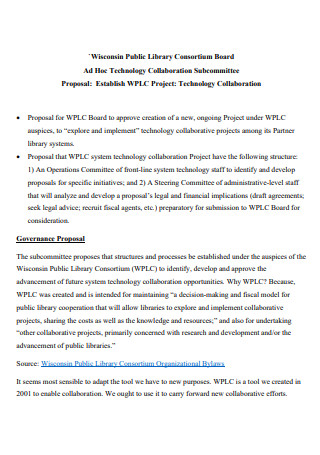
Technology Statement Collaboration Proposal
download now -
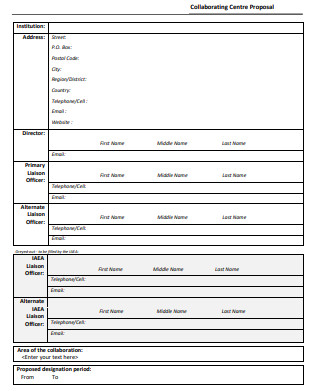
Collaborating Conference Centre Proposal
download now -
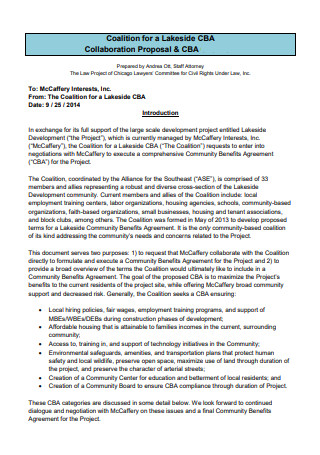
Printable Work Collaboration Proposal
download now -

Collaboration Subject Research Proposal
download now -
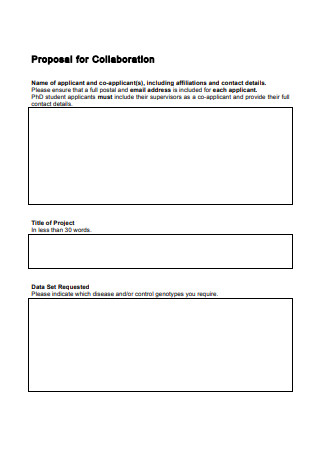
Simple Introduction Collaboration Proposal
download now -

Faculty Collaboration and Research Fund Pre-Proposal
download now -
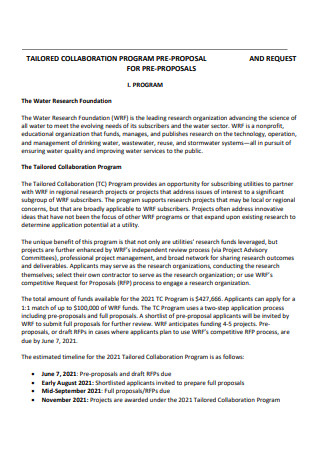
Collaboration Program Pre-Proposal
download now -
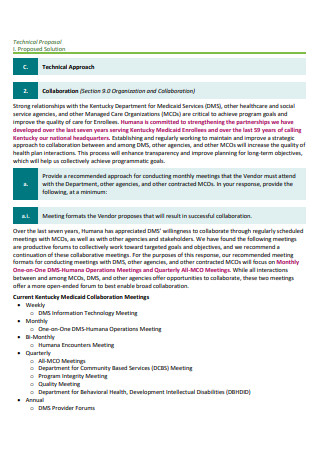
Collaboration Technical Proposal
download now -

International Semester Exchange Collaboration Poposal
download now -
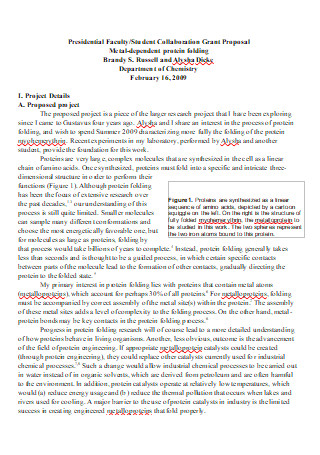
Student Collaboration Grant Proposal
download now -
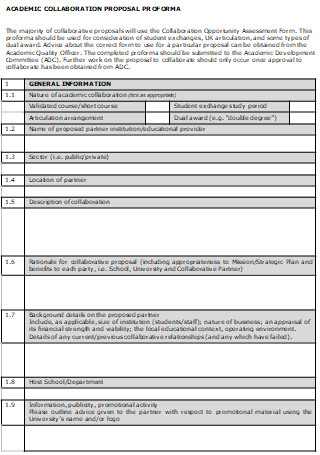
Academic Collaboration Proposal Proforma Template
download now -

Research Infusion Collaboration Proposal in DOC
download now -
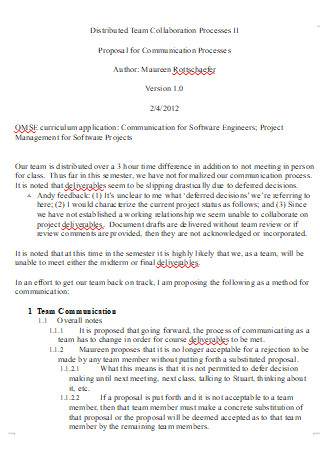
Distributed Team Collaboration Proposal
download now -
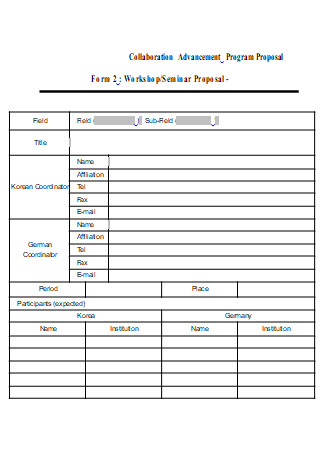
Collaboration Advancement Program Proposal
download now
FREE Collaboration Proposal s to Download
28+ Sample Collaboration Proposal
What Is a Collaboration Proposal?
Types of Collaborative Working
Elements for a Successful Collaboration
How to Create a Collaboration Proposal
FAQs
What is effective collaboration?
What do you do before engaging in collaborations?
What should you write for collaboration?
Through building alliances, each individual showcases their strengths and helps each other to overcome their weaknesses. That is why in every work or school environment, collaborative work is highly encouraged. The same goes for business relationships, as they bring about benefits and growth to both organizations. When working with other companies, the creation of a collaboration proposal is beneficial. Learn about collaboration proposals, their definition, components, and composition, along with related information by reading through the article below.
What Is a Collaboration Proposal?
A collaboration proposal similarly, referred to as a partnership proposal, is a document, usually a letter, form, or file, sent from one company to another with the goal of future collaborative work. Whether the purpose is to work with a company within the same industry that would help complement their products or services, collaborations are the best stepping stones to achieve the business’ goal. In writing up the proposal, remember that the language, terminology, tone of voice, and other writing details must fit to match the company’s target objective. These schemes follow a pattern to suit potential affiliate marketers, social media influencers, or even the most loyal customer on the list that may want to work with the organization for quality content for future advertisements. A collaboration proposal is a helpful networking tool capable of aiding the company to grow, attract new customers while retaining loyal ones, expand into new territories, and gain a better brand reputation and recognition upon proper execution.
According to an article published on the Think with Google platform dated July 2016, content creators heavily influence a company’s brand reputation, and that 6 out of 10 Youtube subscribers follow the advice coming from these influencers rather than television or movie celebrities.
Types of Collaborative Working
Collaboration is essential in the workplace, and it occurs when people work together to achieve a goal. At present conventional and digital collaborations are taking place. In a digital setting, employees can focus on working together efficiently in an environment that allows growth and innovation. The best thing about a collaborative working strategy is its utilization in any workplace.
Elements for a Successful Collaboration
Each collaboration proposal looks different from each one as it heavily relies on what goals and objectives you want to set. However, if these goals are paired with the same enthusiasm and cooperation by all of the members involved, then that’s something worth celebrating. Here are elements of a successful collaboration that a company follows.
How to Create a Collaboration Proposal
As a business owner, you must learn how to take risks to grow your company. A strategically planned partnership allows you to increase productivity and achieve goals through collaboration. Here are helpful tips in creating an effective collaboration proposal.
Step 1: Stay Polite and Professional
In reaching out to potential work partners, be mindful of how you construct the words you use. The main point is to stay professional and never lose your manners, even if the person you are collaborating with is familiar to you. The goal of the proposal is to forge a partnership, first and foremost. Guarantee that the document is free from any grammar and spelling errors because it decreases the document’s reliability to be well-written and professional.
Step 2: Introduce Your Business
After establishing the writing style of your collaboration proposal, create an introduction that highlights a few things about your business and its origins. Whether your chosen collaborator is familiar with your brand or not, it is ideal to have a brief opening for a smoother transition to the main topic of the proposal.
Step 3: Make the Proposal Personal
Indicate the reasoning behind the company’s beginnings as it truly showcases the hard work you’ve put in growing your business. It allows the other entity to perceive a personal tone to the proposal while maintaining professionalism. It also enables you to show how much the collaboration would help your company evolve and grow by showing you care about making the best decisions.
Step 4: Elaborate On the Collaborator’s Role
Apart from talking about the company’s dreams and struggles, emphasize how the collaborator’s part becomes essential. Talk about the company’s strengths and how the potential partner will benefit from the collaboration. Businesses attract their loyal customers and market their business through various techniques by making sure everything goes according to plan. The associate company must understand their role in the collaboration and get a clear picture of what they should expect if they accept the proposal.
FAQs
What is effective collaboration?
Effective collaborations do not mean holding more meetings to collaborate more. Collaboration is within the daily effectiveness of the workplace to function through frequent, daily communication about things that matter. In using the right tools, even weekly meetings will lessen. Through effective communication, employee’s lives, decision-making processes, and problem-solving become manageable and straightforward.
What do you do before engaging in collaborations?
Collaborations are known to be incredible strategies when it comes to achieving your business goals. However, if not done correctly, it can result in problems in the long run. Before taking on the idea of collaborations, remember to know your company well, elaborate on what you get and what you can give, and ensure it is the right partnership for both companies.
What should you write for collaboration?
It is best to emphasize both companies’ strengths and weaknesses. State that working together will help overcome these challenges and at the same time improve the relationship of the companies, not only with one another but for the consumers as well.
Working with one another improves interpersonal skills and allows people to overcome their weaknesses and strengthen their strengths. Collaboration helps to see what individuals can do within companies and what a company can offer to other organizations. In asking to collaborate with other companies, remember to keep it personal and professional at the same time. In the words of Hellen Keller, “Alone we can do so little; together we can do so much.” Use the collaboration proposal samples above and start expanding your business by strengthening the bond within and outside the company.
